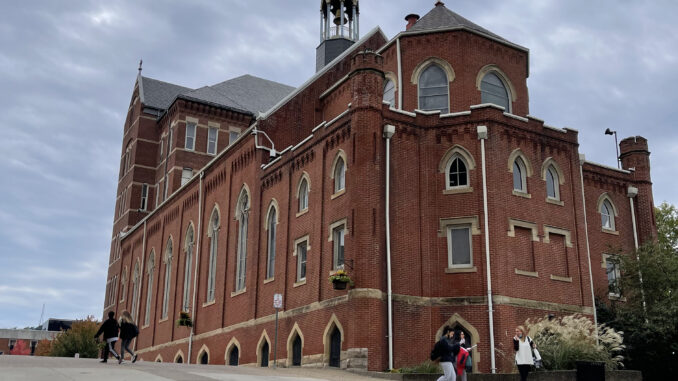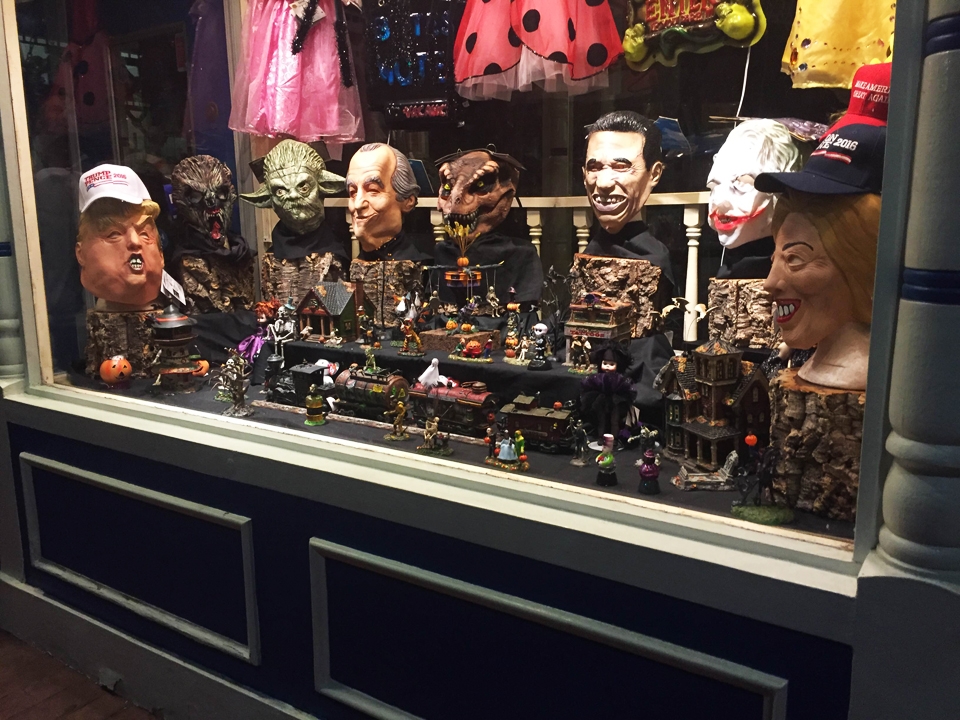
Emma Polen | layout editor
Oct. 28, 2021
Duquesne University is home to a host of mysterious supernatural stories.
Just ask Tom White, who is Duquesne’s archivist and curator of special collections. As an archivist, White said his job is to “document the history of Duquesne, that includes its folklore and legends.”
His expertise in local history and role as an archivist have allowed him to learn the haunted history of Duquesne’s campus. The following stories, told by White, are ghost tales that happened right here on the university’s grounds.
Laval House
A-Walk used to be a cobblestone street passing through a white-collar community. The only remaining original structure from this time period is the Laval House, now home to Duquesne’s seminarians.
There is no definite explanation for the apparition that makes itself known every now and then in the house, but it can be assumed that the ghost originally lived in Laval House when the building was a home for the wealthy, intellectual community before the Spiritans’ established the university.
Laval House was a shelter for many people from the Duquesne community over the years. At one point, Duquesne’s football athletes stayed in the house. During their stay, members of the team reported seeing a woman in black climbing up and down the stairs, and she seemed to be fond of a specific room on the left side of the upstairs.
Some students and staff also said they saw a woman in the upstairs window facing A-Walk.
The woman in black has not been spotted in over a decade, but some report that she has been heard. Next time you go inside the Laval House, keep an ear open for mysterious soft footsteps from the upstairs, and creaking stairs and floors.
Des Places
Many people know that Des Places is haunted, but do you know the building’s tragic history?
The earliest history of the building dates back to 1909, when the site was called the “Newsboys Home.” It served as an orphanage for young boys. The boys lived closely with one another, and when the 1918 Spanish Flu epidemic struck, the orphanage had many deaths.
Since Duquesne bought the building in 1961, there have been several reports that suggest the presence of one or more young boys who died when the building was still called Newsboys Home.
Some reports included unusual prank-like behavior, glimpses of a young boy in the hallway and the sound of laughter from a young child.
The Duquesne Duke’s offices used to be housed in the old Des Places Building. One night, an editor was by themselves in the office and had laid out and organized all the pages on a table. He left the room for just a few minutes, but when he returned, the pages were reportedly stacked differently on a different table.
The original orphanage building was torn down, and rebuilt as the newest Des Places dormitories.
So, this may mean that Des Places’ young residents are gone for good. However, the dorm’s location is the same as the old Newsboys Home, and builders preserved the original cornerstone of the building.
Residents of the current Des Places building have reported the elevators opening and closing by themselves repeatedly — along with a young boy’s laughter.
Old Main & Bayer Hall
Before the Spiritans moved to Pittsburgh, there used to be a surgical hospital atop the same hill where Old Main stands today.
In 1850, the hospital was owned by Dr. Albert G. Walters. Walters was an abolitionist, and his hospital was often a stop on the underground railroad for slaves moving along the Monongahela River.
A tunnel ran underneath the street through what is now the basement of Old Main. It most likely was used to hide slaves who sought refuge at Walters’ hospital.
On one occasion, an escaped slave seeking refuge made it to Walters’ doorstep and collapsed, still in shackles. The man died soon after in Walters’ care.
During the Civil War, Confederate soldiers who were captured but severely wounded were first sent to Walters’ hospital to be treated. One confederate soldier died in this hospital.
After Walters died in the 1870’s, his hospital was selected as the Spiritans’ new home. They moved the building to the other side of the street, which is considered the back corner of today’s Bayer Hall (then St. John’s Hall). Old Main was later completed in 1885.
Almost immediately after Old Main was finished, reports from both buildings came about strange, loud noises in the basement. Those who heard the apparitions all agreed that there were two sets of voices: one of the escaped slave and the other of the confederate soldier.
Both buildings were linked to these two men’s histories. St. John’s Hall was the original structure of the hospital and the other building, Old Main, was the original site.
One night, stories claim that the noise became so bad that a German priest charged into the basement, saying, “I’m coming down to drive you out.”
No one was brave enough to follow after the priest, but they say that the ghost of the confederate soldier responded, “Come ahead, I know all about you. You don’t scare me.”
After this, listeners heard signs of a physical struggle, the splash of Holy water and prayers.
Nobody heard the soldier again.
But for years since then, people have claimed they hear the ghost of the slave in Old Main’s basement.
Are these stories real?
Tom White says he has never experienced these Duquesne apparitions first-hand, but has been interested in the “unusual
and mysterious aspects of history” for a long time. During his time at Duquesne, White has come across multiple supernatural reports spanning Duquesne’s history and prehistory.
Even if you are skeptical of the sources of these stories, White believes that their telling is worth the effort.
“Each story has existed for a long time,” White said. “It also helps to remember some of the history of the university…and sometimes ghost stories do that. They’re a form of history told in a more entertaining way.”




